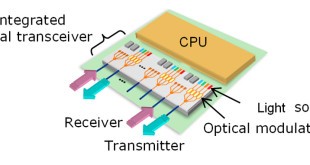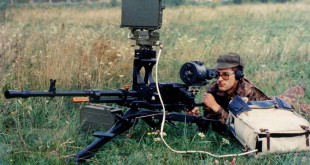Quantum technologies exploit the fundamental laws of nature to reach the ultimate limits of sensing, imaging, communications and computing; in short, enabling leaps in the precision, accuracy and speed of technology. They are diverse, complex, and generally early in technical readiness and demand new ways of thinking about the employment …
Read More »DARPA advances Microwave Photonics for RF signal processing and radars
The military/defense industry continues to encourage the advancement of multifunctional receivers. Yet the demands for higher-frequency operation, increased bandwidth, increased dynamic range, and enhanced sensitivity creates unique design challenges for present technology. Size, weight, power, and cost (SWAP-C) dynamics heavily influence the military/defense industry’s value for a particular technology. …
Read More »Backscatter Radio technology enables HD Video streaming to transmitting Internet of Things Sensors Several Kilometers
Backscattering is a form of wireless transmission based on modulated reflection of external RF signals. Whereas conventional radios generate their own signals, backscatter radios transmit data by making tiny changes to reflected signals. This approach requires a minimal number of active components, promising simple low-cost battery-free operations. Since the source …
Read More »DARPA PIPES developing integrated optical transceiver capabilities into multi-chip modules for high throughput parallel processing
Parallelism – or the act of several processors simultaneously executing on an application or computation – has been increasingly embraced by the microelectronics industry as a way of sustaining demand for increased system performance. Today, parallel computing architectures have become pervasive across all application domains and system scales – from …
Read More »Gallium Nitride technology enabling IoT revolution, Cellular 5G , Optoelectronics and sensors
Integrated circuits and power devices utilized by the semiconductor industry for the production of advanced computers, consumer electronics, communication networks, and industrial and military systems have been almost exclusively based on silicon technology. The requirements of future electronics place a great emphasis on achieving new devices with greater power density …
Read More »polaritonics
Between electronics and photonics there exists a frequency gap of approximately two octaves, i.e., the frequency range between 100 GHz and 10 THz, across which there are limited capabilities for signal generation, control, guidance, and processing. Researchers have demonstrated e that phonon-polaritons in ionic crystals like LiNbO3 or LiTaO3 may …
Read More »RFSoC for Military 5G, Radar and Electronic Warfare
We live in an increasingly interconnected world, one in which mobile communications provide a significant element of this interconnectivity. This increasing demand for high speed, low latency networks supporting mobile connectivity is leading the definition of 5th generation mobile networks. These next generation networks are driven not only by changing …
Read More »Growing requirements for Man portable Radars for counterterrorism, counter UAV, maritime surveillance and battlefield applications
Radar, is an electromagnetic sensor used for detecting, locating, tracking, and recognizing objects of various kinds at considerable distances. It operates by transmitting electromagnetic energy toward objects, commonly referred to as targets, and observing the echoes returned from them. Energy is emitted in various frequencies and wavelengths from large wavelength radio …
Read More »Precision Guidance Kit turn artillery rounds into smart weapons that penetrate A2/AD environments and destroy threats even in GPS jammed environments
Artillery ammunition is designed for use in guns, howitzers, and mortars. Size designations for artillery ammunition range from 37MM through 280MM. Artillery ammunition can be classified according to weapon system (gun, howitzer, mortar), filler composition (explosive or chemical), and military use (practice or service). The diameter, or interior, of a …
Read More »DARPA TRIAD to apply AI/ML to phased array antennas for Military Wireless communications and radar systems
The demands on Wireless communications and radar systems have been continuingly increasing as the need for accuracy, efficiency, and more advanced metrics become increasingly important. Many new applications will only be possible with antennas that consume less power in a lower profile than traditional mechanically steered dish antennas. These requirements …
Read More » International Defense Security & Technology Your trusted Source for News, Research and Analysis
International Defense Security & Technology Your trusted Source for News, Research and Analysis








